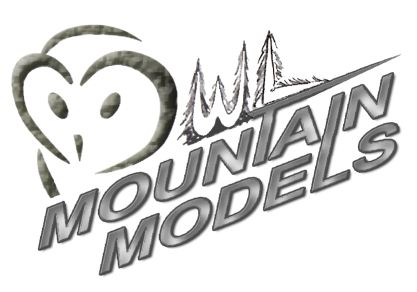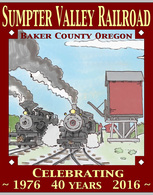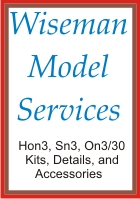

Stockton & Ione Railroad.
By Andrew BrandonF ounded in 1849, Stockton, has always been an important shipping hub on the San Joaquin River. To the east the Sierra Nevada mountain range and its vast mineral riches promoted the creation of the Stockton and Copperopolis Railroad to reach the copper mines around Copperopolis, to the East. In the 1860s, rich deposits of coal (lignite) were discovered near Ione, to the north east of Stockton. Having access to this local fuel source, many prominent locals felt, would encourage Stockton to become the largest industrial center in the state.
In 1870 Dr. E. S. Holden, president of the Stockton and Copperopolis proposed a connecting railroad by the name Stockton & Ione City Railroad. This standard gauge line would serve as a subsidiary of the Stockton & Copperopolis with the goal of connecting to Ione and the coal beds nearby. Financial setbacks prevented the line from being built. In 1870 the Stockton & Ione found itself in court for violating the terms of the original construction bonds issued in 1867. When the bonds were sold at auction the S&C wound up in the hands the Stockton & Visalia Railroad. In October 1871 the Central Pacific Railroad took control of the Stockton & Visalia.
To reach the coal fields around Ione, Dr. E. S. Holden revised his plan to build a narrow gauge railroad instead. The Stockton & Ione Railroad was Incorporated in February 1873 with the intent of building from Stockton through Linden and on to Ione City. Collection of subscriptions began in the fall of 1873 and a survey of the line was completed by the end of November.
Harry B. Platt, a prominent Stocktonian, was selected as the contractor to build the railroad. Grading work started in July at Linden on the S&C and pushed west towards Stockton. Around this same time the coal lands, part of Rancho Arroyo Seco, were acquired by the company. 1
In early August the board of directors met with Schyler, Platt and Platt’s attorney James T. Boyd to discuss the progress on the railroad. The board had concerns with the progress of construction, specifically there had been little progress on track laying. Platt and his attorney argued that it was difficult to construct the railroad on schedule without the expected $100,000 budget. Sale of bond subscriptions had not lived up to expectations and construction had to continue on a limited budget. 2
Construction of rolling stock began in August. The Stockton Independent of the 17th described the construction of a novel dump car built by the car shop that was 22’ long and 6’ 4” wide. This car was constructed using special trucks from Risdon Iron Works that allowed the body to tip making unloading easy. Plans for building passenger equipment were also being drawn up at this time. Rail for 18 miles of track was ordered in September. 3
By the end of November 12 miles of the route had been graded. As work was progressing on the grade from Linden, the board of directors were concerned with the actual construction of the railroad. In December the board called a meeting with H. B. Platt and entered an agreement where he was required to put the full amount of money raised by subscriptions towards the purchase of rails for the railroad. 4 Shortly thereafter rail for 18 miles of track and two locomotives were ordered from the East. On December 30, 1874, the Central Pacific leased the S&C and the base of construction moved from Linden to Stockton.
In Mid-January 1875 the Schooner “Ocean Pearl” delivered rails for the railroad. Through the first few months of the year multiple shipments of rails and ties were delivered to Mormon Slough. By the middle of March more than 600 tons of rail were on hand.
On April 20 the directors held a meeting, electing E. S. Holden, George Gray, H. E. Hall, E. R. Stockwell, J. K. Doak, A. Clark, J. H. O'Brien, R. K. Reid and Fred Arnold to the board. Later in that month 352 tons of rail and track components stored at Mormon Slough were sold to Edgar Mills, the president of the Eureka & Palisade Railroad in Nevada. 5 The sale brought in much needed funds, but this was not enough to keep construction going ahead and construction was halted on April 30th.
On May 13th the board of directors held a meeting with Henry Toomy of San Francisco to discuss a proposal to sell him the remaining bonds. The board accepted his proposal and construction resumed. 6 On May 24th construction of the right of way out of Stockton began with eight teams going to work on the terminal in Stockton. Track laying began on June 10th along Sonora street in Stockton and reached East street on the edge of town by June 16. 7 The contractor hoped to reach Linden by July 15th, but shipping delays of track components put an end to track laying until the end of the month.
In early August the railroad made great progress. By the 2nd a 32’ x 50’ depot was under construction at the corner of Sonora and Beaver streets in Stockton. An additional 50 tons of rail were delivered. 8 The first locomotive, the “Stockton” arrived from the Mason Machine Works later in the month of August. In early September, nearly 7 miles of track were laid and grading had begun in the foothills.
The house of cards came tumbling down when the Bank of California collapsed in September. Subsequent bank failures drug the state of California into depression during the end of 1875. In early October 1875, the officers of the company signed the railroad bonds and deposited them in at First National Gold Bank and Trust Company of San Francisco. Owing to previous financial troubles, these funds were only to be drawn by order of the Treasurer of the Stockton and Ione Railroad Company, countersigned by the contractor, and only to be used for the purpose of constructing the railroad. 9 On November 1st, the First National Gold Bank and Trust Company of San Francisco suspended operations, taking the finances of the railroad with it. 10
Left unable to pay its debts, the railroad faced several lawsuits in January 1876. Employees of the contractor sued the railroad and Miller (head contractor). The chief engineer and master car-builder of the railroad both sued the railroad, resulting in liens being put on the cars, shops and rail that was on hand. To satisfy the court order, these items were sold at public auction on July 12, 1876. In March, the remains of line were torn up, excepting a short stretch of the right of way intended to be used in a later transit project on the east side of town. 11 In November, the Southern Pacific completed the Amador Branch Railroad from Galt to Ione, utilizing the same plot of land for their depot the Stockton & Ione planned to use.
Despite its short life, remains of the Stockton & Ione were spread across the west. The Mason Bogie “Stockton” was sold to the promoter Seattle & Walla Walla Railroad in October 1876. There it was named “A. A. Denny” and soon found to be top heavy and troublesome. In 1878 it was rebuilt into a 0-6-4T locomotive and continue service there through the 1890s. The “Amador” was returned to the Mason Machine Works and rebuilt as a 42” gauge locomotive for the Covington, Columbus & Black Hills RR as their #2 "Dixon". The rolling stock and rails were sold to the struggling Nevada Central Railroad in Battle Mountain, NV. Several of the lightly built flatcar/boxcar bodies were put on the ground along the line as sheds and a portion of one of these cars is now preserved at the Berlin-Ichthyosaur State Park in Berlin, NV.
2. Sacramento Daily Union, Volume 47, Number 7285, 10 August 18744
3. Sacramento Daily Union, Volume 47, Number 7292, 18 August 1874
4. Sacramento Daily Union, Volume 48, Number 7404, 26 December 1874
5. Daily Alta California, Volume 27, Number 9155, 27 April 1875
6. Sacramento Daily Union, Volume 1, Number 71, 15 May 1875
7. Marysville Daily Appeal, Number 141, 17 June 1875
8. Daily Alta California, Volume 27, Number 9251, 2 August 1875
9. Sacramento Daily Union, Volume 1, Number 223, 16 October 1875
10. Sacramento Daily Union, Volume 1, Number 223, 2 November 1875
11. Marysville Daily Appeal, Number 15, 20 January 1876
Bibliography
Hilton, George W., American Narrow Gauge Railroads, Stanford, CA: Stanford University Press, 1990. ISBN: 0-8047-2369-9
“Stockton & Ione Railroad” The Western Railroader Vol 42 Number 470, November 1979.
Wallace, Arthur W. Mason Steam Locomotives Forest Park, IL: Heimburger House Publishing Co., 2004 ISBN: 0-9115-8155-3
An Illustrated History of San Joaquin County, California Chicago, IL: Lewis Publishing Co., 1890.
Tinkham, George H. A History Of Stockton, San Francisco: W. F. Minton & Co., 1880.
Prospectus of the Stockton & Ione City Railroad, Stockton, CA: Observer Power Printing House, 1870.
Reference Material Available Online:
Drawings.
Stockton & Ione Boxcar / Flatcar by Don Ball.  330KB
330KB
Photographs.
Collected Stockton & Ione Railroad Photographs.
Images collected from private collections, libraries and historical societies.
Reports.
Berlin Ichthyosaur State Park Facility Condition Analysis by the State of Nevada
Department of Conservation & Natural Resources, Division of State Parks.
A portion of Stockton & Ione boxcar, known as the "Bobtown Boxcar" (Building #1003) is described on page 33 and shown in a photograph on page 54.



